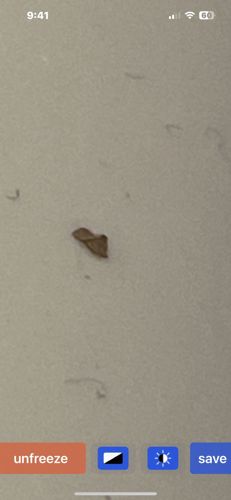Webbing Clothes Moth
Scientific Name: Tineola bisselliella
Order & Family: Order: Lepidoptera, Family: Tineidae
Size: Adults: 6-8 mm (1/4 - 1/3 inch) wingspan. Larvae: up to 12 mm (1/2 inch) in length when mature.

Natural Habitat
The webbing clothes moth is primarily an indoor pest, found in homes, museums, warehouses, and other structures where natural fibers are stored. They thrive in dark, undisturbed areas like closets, attics, storage chests, and under furniture. They can infest carpets, rugs, upholstered furniture, clothing, blankets, and natural fiber insulation.
Diet & Feeding
The larvae of the webbing clothes moth feed on natural fibers, especially those of animal origin such as wool, silk, fur, feathers, and felt. They also consume lint and dust that contain these fibers. Unlike other pantry pests, they do not feed on food items. They require moisture, which they can obtain from the fibers themselves.
Behavior Patterns
Adult clothes moths are nocturnal and avoid light. They are not strong fliers and prefer to crawl or make short hops. Larvae spin silken tubes or cases as they feed and grow. They are often found in dark, undisturbed areas. The entire lifecycle can take 30 days to several years depending on environmental conditions (temperature, humidity, food availability).
Risks & Benefits
The primary risk associated with webbing clothes moths is the damage they cause to natural fiber materials, leading to the destruction of clothing, carpets, and other textiles. They do not bite humans or transmit diseases. There are no direct benefits of this insect to humans or the ecosystem, as they are considered a nuisance pest.
Identified on: 9/2/2025